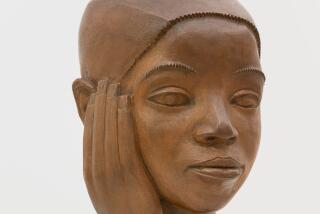Four Black Artisans From a Golden Era
- Share via
The SankofaHeritage line showcases work by free black artisans in three regions during the 18th and 19th centuries. Considered the Golden Era for African Americans, the 1820s to 1860s served as a period when many black craftsmen prospered.
Either freemen who emigrated from the West Indies and arrived in the States with their status, or slaves who began generating extra income for their owners and ultimately were able to procure enough work to buy freedom for themselves and their families--these carpenters, blacksmiths, silversmiths, masons and joiners made a name for themselves during the country’s antebellum period.
Some of the most prominent examples of black freemen who were able to not only work but also prosper outside the boundaries of slavery are Thomas Day, Henry Boyd and the Barjons--father and son.
Day, who lived and worked in Milton, N.C., owned and operated a successful furniture business for more than 30 years, despite the racial tensions within the community in which he operated.
Born into slavery in Kentucky in 1802, Boyd obtained a general slave pass from his master to work in the salt works and ultimately saved enough money to pay for his freedom, after which he became a carpenter and joiner.
Pierre Charles Dutreuil Barjon was born in Santo Domingo (now Haiti), in 1799, to a freewoman of color and a father of unknown identity. In 1813, Barjon began apprenticing in New Orleans as a cabinetmaker, working for Jean Rousseau, another freeman of color. He established his own business in 1821 in the city’s French Quarter that was later taken over by his son Dutreuil Jr. in 1854. Dutreuil Jr. operated the shop until 1856--it closed due to his father’s accumulated debts.
More to Read
Sign up for The Wild
We’ll help you find the best places to hike, bike and run, as well as the perfect silent spots for meditation and yoga.
You may occasionally receive promotional content from the Los Angeles Times.






